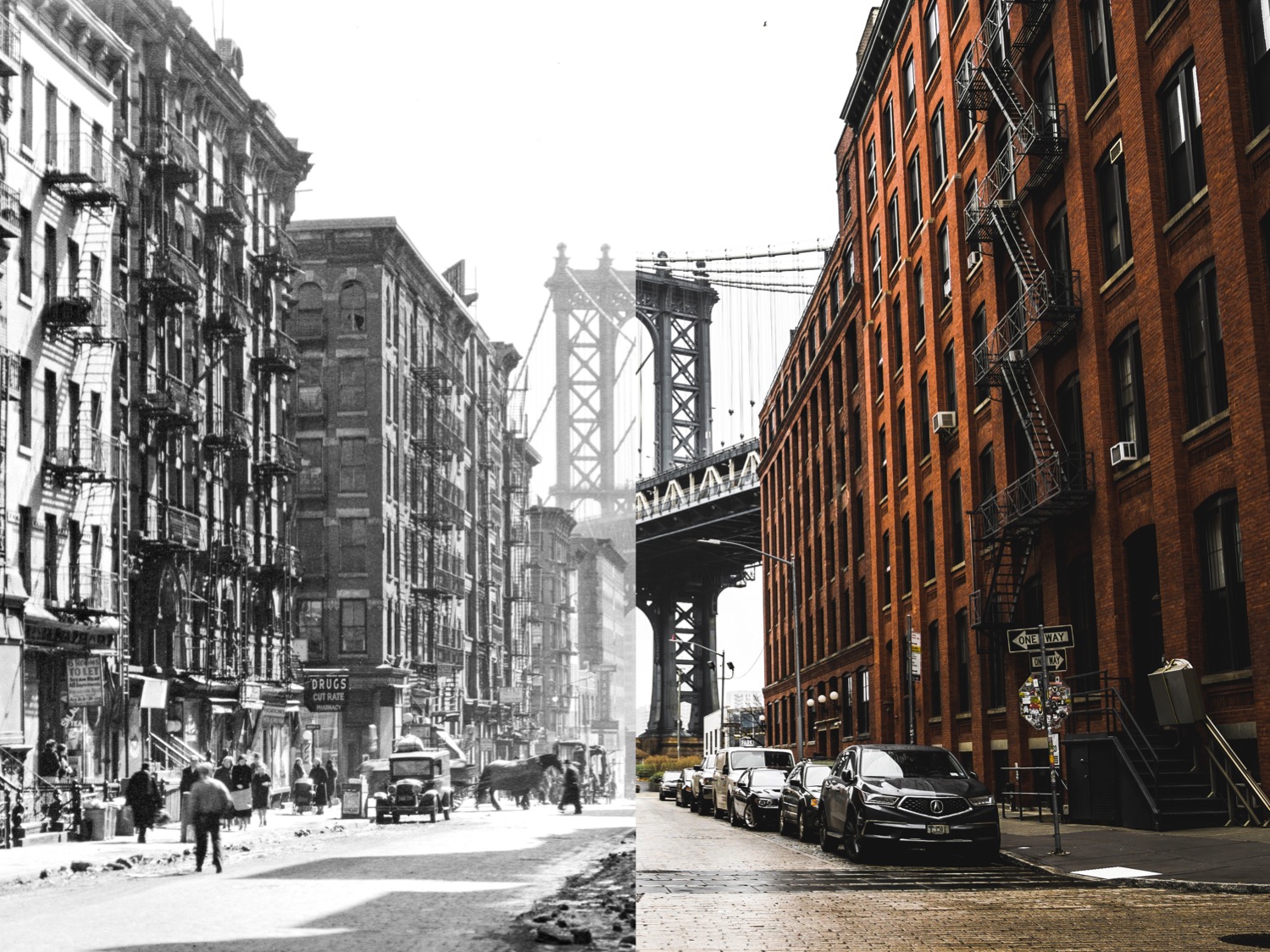For the vast majority of us, our high school United States History class was taught chronologically, and the idea of a thematic structure wasn’t even one you philosophized over with your cooperating teacher. But now on the other side of the teacher’s desk, you’re wondering… is there a better way?
Yes! Yes, there is! I unapologetically restructured my US history course into core themes several years ago. And I have zero regrets.
Like me, you probably struggle to fit everything into fewer than 180 hours. But here’s the truth: it’s not you. It really is impossible.
Just think about all the history that has been added since you graduated high school: the end of the Cold War and the rise of globalization, tech booms and recessions, wars in other countries and protests in our own streets. Yet, our instructional time hasn’t increased one bit.
Not only that, but in the last decade there has been a shift to teaching the “alternative narrative” of social history thanks to Howard Zinn and the focus on primary source analysis and other higher-level skills thanks to Common Core Social Studies standards. Both have greatly (and positively!) altered our whole mission as history teachers.
But with the emphasis on these great things, nothing else has been taken off the must-teach list. Only added. What if instead of wondering if we are failing at teaching, we realize that perhaps the system has succumbed to setting us up for failure?
Adding to that gut-punch feeling is a wondering if authentic takeaways are even happening when, to a 16-year-old, it’s all an endless string of abstract puzzle pieces to memorize before moving onto the next pieces. September 11th isn’t any more real to them as the War of 1812—it’s all equally distant history with little context. And it all gets the same play time according to state standards. Diana Laufenberg makes a great argument for teaching US history thematically with the analogy of knowledge being books, stacks and stacks of disorganized piles of books. Overarching themes act like labeled bookshelves that can organize the books. Shelves are the schema on which to place new books alongside other, related books. That kind of connection-making is what makes learning truly engaging and sticky!
In designing my US History courses thematically, I can focus my precious limited time on the most important ideas, which I truly believe then allows my students to take away more impactful meaning.
If you are tied to a mandated end-of-course exam or are required to follow a very detailed pacing guide, then a thematic history class may not be possible. But if you have the blessing to use your professional discretion, I encourage you to trust your gut and make the bold move to teaching US history thematically.
The biggest hurdle, though, is HOW? How do you create a thematic course? This is a question I have gotten countless times! So let’s get started!
Below are the 5 steps you need to craft your first thematic unit. First, though, if you are just starting your switch, you may want to try a hybrid version that still keeps a general chronology but also keeps each era hyper-focused on a particular theme. For example, teaching about WWII through the lens of “patriotism.” I did this format for years with success. When I decided to weave in project-based learning, I went fully thematic in order to better connect with authentic projects. But the hybrid way totally conveys the same benefits!
1. Decide the central concept and theme
If you want to start with a hybrid version, your central concept is the one defining lens through which you want students to view and remember each era: the industrial growth of the Gilded Age, the patriotism of World War II, or the activism of the 1960s.
The theme is then what you want students to grapple with about that concept: how technological progress also caused problems; how patriotism came in many forms; how media played a huge role in the success of protest movements.
If you are going fully thematic then your units’ central concepts are ideas like immigration, protest, and heroism, which are often confused as being the themes themselves. Immigration isn’t a theme, it’s a concept.
These are a few of the concepts I have built units around. Then the added layer of a theme is the enduring aspect of these concepts that intrigue us as humans: the common story that all immigrants hold; the most effective strategies to create change; the defining character traits of a hero.
This first step takes time—to arrive at the best, most defining central concept as well as the theme that best deepens that concept. So don’t rush it. You might even want to spend a school year brainstorming ideas as you teach through the content one last time before making the switch.
The most crucial thing, however, is that your concept needs to be something all your students know at least something about already. Regardless of their reading levels or life experiences, they must already have a mental bookshelf with that label. Patriotism, protest, and technology all pass this test. Manifest destiny, abolitionism, or containment policy do not.
What is a concept and theme would you love students to take away with them?
2. Craft the driving question
A good driving question doesn’t have a right answer, instead it creates genuine curiosity. It must also build out of the schema students already have (and the content students learned last unit doesn’t count). Lastly, your question should propel their understanding forward throughout the whole unit.
Driving questions endure beyond the content. The content is simply the material through which to grapple with the question. This is where the paradigm shift from chronological to thematic hits the pavement: your question isn’t checking for understanding of the content, it uses the content to help students decide big ideas, like their own values and perspectives on the world.
If the content could be swapped out and the question still holds, you’re on the right track. If you really don’t have the answer to it yourself because there are so much evidence to weigh, even better. If it truly asks students to share their views on the world, you are in the golden zone.
Using a World War II unit as an example, let’s look at the differences. Chronological content-heavy questions would be “How did the Allied powers win the war?” or “How did Americans on the home front contribute to the Allied victory?” Rather than building off what students already know, those questions assume no incoming knowledge. Their only purpose is to assess how much knowledge was gained. This knowledge has no bookshelf schema to go on.
A driving question for a thematic unit could be “How should patriotism look during war?” With this question, your thematic unit would consist of a handful of curated subtopics from WWII that illustrate differing perspectives on the concept. Say, the Normandy invasion, the daily rationing and war bonds, the Double V campaign, and Korematsu v. United States. That’s it. That’s your World War II unit.
If you want to go full thematic, then your question might be “Is protesting a war ever patriotic?” and you might select a range of war-time protests: Henry David Thoreau’s “Civil Disobedience” from the Mexican War, the Silent Sentinels from WWI, the Double V Campaign of WWII, and the anti-war songs of the Vietnam era.
How powerful of a takeaway for a young adult to have firm convictions on an enduring issue like this?
The question brainstorming is the hardest stage and requires a certain foundation of your own understanding of the material. I encourage you to collaborate with a colleague at this step to bounce around question ideas and wordsmith final drafts before moving forward.
What question best captures the concept and theme you’ve selected?
3. Pick your spotlight subtopics
The magic number I have found to choose is three to five, depending on how in-depth you need to go on each.
The topics should provide students evidence for the different sides of the questions and even perhaps one that adds a whole new layer to the question. I try to be thoughtful in selecting events and people that span the timeframe of the course, and be cognizant to include different minority groups, geographic regions, class levels, and both genders. I also like selecting lesser-known topics to pair with much more widely-known topics.
Once you have a clear focus of your spotlights, the easier work starts with consulting primary source readers, finding engaging documentaries, and selecting powerful photographs, artworks, and/or statistics to create the perfect curated collection.
For example, in my immigration unit, I knew I wanted to include the Vietnamese refugee story of the last 40 years as one of my spotlights, so I searched for sources and quickly found powerful personal narrative essays, poems, news stories, and documentaries. Sources that would never make it into a traditional chronological course are now center stage and construct a powerful and relevant takeaway of the Vietnam War for my students.
The other two spotlights of that unit are the Ellis Island immigrants and the African Americans who were collectively considered part of the Great Migration. Three very different groups, but not really as well! That’s what makes a compelling, curated collection of spotlights.
What handful of spotlight topics come to mind for your question?
4. Select your focus skills
This is a bit of a bonus step that I firmly believe belongs in a thematic unit design. Around the time I gave up on trying to teach all the content, I also realized that trying to hit all the skills in every unit led to the same effect of inch-deep outcomes. Students weren’t progressing terribly much in any of them. So now with each unit, I select a set of focus skills that is inherent to the central concept and theme and we hit them hard.
Every activity ties to the central concept, the driving question, and the focus skills. By the end, students have mastered those skills forward and back.
For example, in that same immigration unit in which the theme is storytelling, students analyze sources for quantitative and qualitative evidence. They recognize how the primary sources are limited to just one or the other, causing them to only tell part of the story, but that secondary sources weave the two together to make a rich story. We analyze secondary sources like NPR news stories of citizenship ceremonies, documentaries on Vietnamese nail salons, excerpts from Isabel Wilkerson’s The Warmth of Other Suns for content, but also to hone their own storytelling powers and they serve as a model for our interview narrative essay project.
Another unit of mine focuses on identifying ethos, pathos, and logos in the primary sources we study so my students have real-life examples to use as models for writing a persuasive letter of their own.
Of course, basic research, sourcing, and argumentative writing is occurring throughout every unit, but deliberately deep-diving on specialized skills like these is hugely impactful in my efficacy as a teacher.
What set of skills fit with the unit you are creating?
5. Culminate with a DBQ essay
The only natural assessment for a unit so tightly focused on answering a single open-ended question is a document-based essay, so that’s what all of my end-of-unit assessments are. There are many reasons why I strongly believe an open-ended assessment is the best way to culminate units in a social studies course, and how they are a natural cornerstone to thematic teaching is one of them.
If every activity, every spotlight subtopic, every source you select helps answer the driving question that you’ve challenged students to grapple with, then of course you should allow them the privilege to finally develop and express their thoughtful answer to it!
The essay doesn’t need to be some elaborate production that requires students to include every single detail covered, but rather it should allow students to select a wide range of evidence from the unit to demonstrate control over the spotlight topics as well as how they see the pieces fitting together.
Just be sure to provide time and some guidance for students to decide their answer, review their materials, select their best pieces of evidence, organize it in an outline, and develop it all into an essay. It can be a no-notes, in-class timed essay, or a take-home typed essay. You choose!
What essay requirements meets your students where they are at and simultaneously challenges them?
I can’t overestimate the way thematic approach has upgraded my impact as a history teacher. All the units and projects mentioned above are available for purchase in my store. If you are inspired to craft your own, send me a message! I’d love to help you build your first thematic unit!
Feature image credit: New York City Public Library and Bantersnaps





